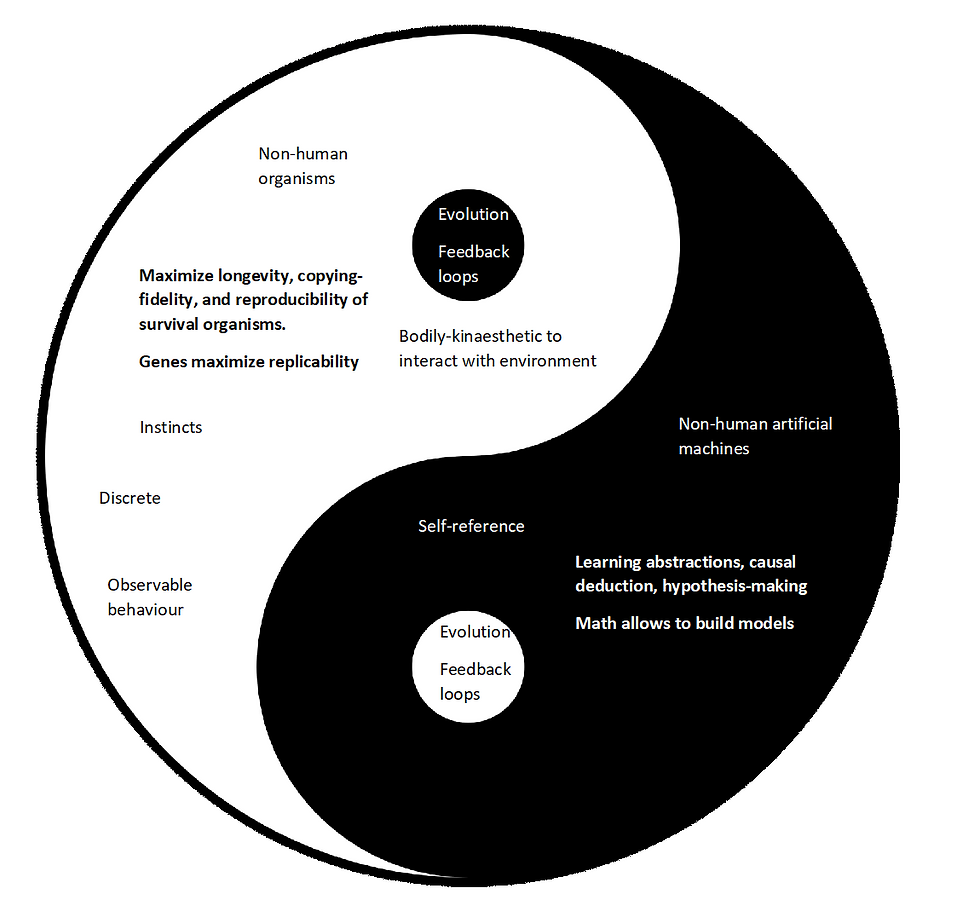Certainty is a cover up for uncertainty part 1.0
- Xuelong An Wang

- Apr 25, 2020
- 4 min read
This might sound like a boring, repetitive question, but, do you think two plus two equals four? Exactly four?
Though it might sound annoying, I’m not trying to doubt reality.
I’m simply asking, does two, or the concept attributed to the vessel “2”, plus another such vessel filled with the concept of “2” equals four?
Of course it is, you might say, if I have 2 apples, and a fellow colleague gives me 2 apples, then I have 4 apples:

However, if the second apple is bitten, then does that still count as 1 apple?
Why isn’t it 3.24 apples? They are still apples, bitten or whole.
What if the third apple was red and vastly different in size compared to the other 3? Would that still count as 2 + 2 = 4 apples? What if the first lost its stem? What if the fourth one had a leaf attached to its stem?
Despite given these hypothetical macroscopic differences, we might still say they are 2 + 2 = 4 apples, however, the concept of 4 apples just became a bit blurry. Does “4 apples” mean that I have 4 identical apples? If I add another fruit, say an orange, then would that make 4 + 1 = 5 apples?
Certainly not, and this is where things get a little bit unnecessarily complicated, but bear with me, I’ve got 2.0 things to say about this.
First, it’s really difficult to define or describe what can live up to the concept of “4 apples”. A bitten apple can count as 1 apple, an apple without a stem may still count as one apple, an apple with other physical properties (different color, no seed, smaller or bigger) can count as one apple, so on and so forth. We can extrapolate a few things regarding this. For instance, that we are rounding up the concept of being apple based on a archetypical apple we have in mind. For example, when we were a kid, we were taught that this fruit with these qualities could be qualified as an apple. This is what’s called prototype theory, which basically advocates that for every concept (say, “apple”, “chair”, “car”) there exists a prototype in our minds that act as a representative of that concept, and small modifications to it doesn’t necessarily change the concept itself. That’s probably why even if a stem falls off, a leaf is missing, or the apple is bitten, they are still considered as “apple”.
However, why are each of the four apples attributed the concept of “1” equally, if they bear some differences towards the “prototype apple” inside our minds (formed during our childhood)? This is where I open a discussion for you to think.
My opinion is that we treat those apples with physical differences equally because we are rounding them up the concept of 1 for each. Returning back to the picture, now with the necessary modifications:

I believe that I have 3.24 apples, which results from the fullowing sum, respectively:
0.90 apple + 0.85 apple + 0.99 apple + 0.50 apple = 3.24 apples
What is 0.90 apple? Based on my “prototype apple”, this concept I acquired during my childhood (you can read Harley’s Psychology of Language for more knowledge), I estimate that the first apple bears 90% resemblance to it, and the same is done to each one of them.
Now, why do I want to share this subtleties?
Well, firstly, I want to share some opinions regarding how we view math. Math is a beautiful myth that lurks in nature, around and inside us.
However, I believe that a core principle in math is that there doesn’t exist the concept of exactness. For example, I don’t believe that in any setting, not only talking about apples now, there doesn’t exist the concept of a perfect “1”, nor a perfect “2”, so on and so forth. Then what exists?
Well, my opinion is that reality is permeated by uncertainty, and any constituent in reality can be represented (and maybe even made up) by approximations only, in other words, instead of saying “1”, we are in reality rounding up “0.999…” or “1/3 * 3”, instead of saying “2”, we are instead saying the rounding up of “2.0000…”.
I think that’s a constituent of reality, and another way to test this is think about measurements. For example, what is the distance between your eye’s retina and the screen? Cells are constantly moving, atoms are constantly vibrating, how can one get a precise measurement then? Actually, one can also say, then, that there exist an infinite distance between you and the screen, why? Because you can half the distance infinite times! I guess that’s a bit far off topic.
Another little experiment to visualize this continuity of inifinitesimals is when you measure your height or weight. You can experience it yourself that there doesn’t exist the perfect measurements, everything is rounded up as there exists uncertainty. Why, then, is this uncertainty ignored when we are counting objects? Discreteness, in this case, is an answer I dispute because, as I’ve shared above, concepts might be revolving around a prototype, therefore the numbers attributed to them might be just the rounding up of decimals; in other words, discreteness is just a cover-up for continuity.
Why is this important?
Join me in “Certainty is a cover up for uncertainty” part 2.0.



Comments